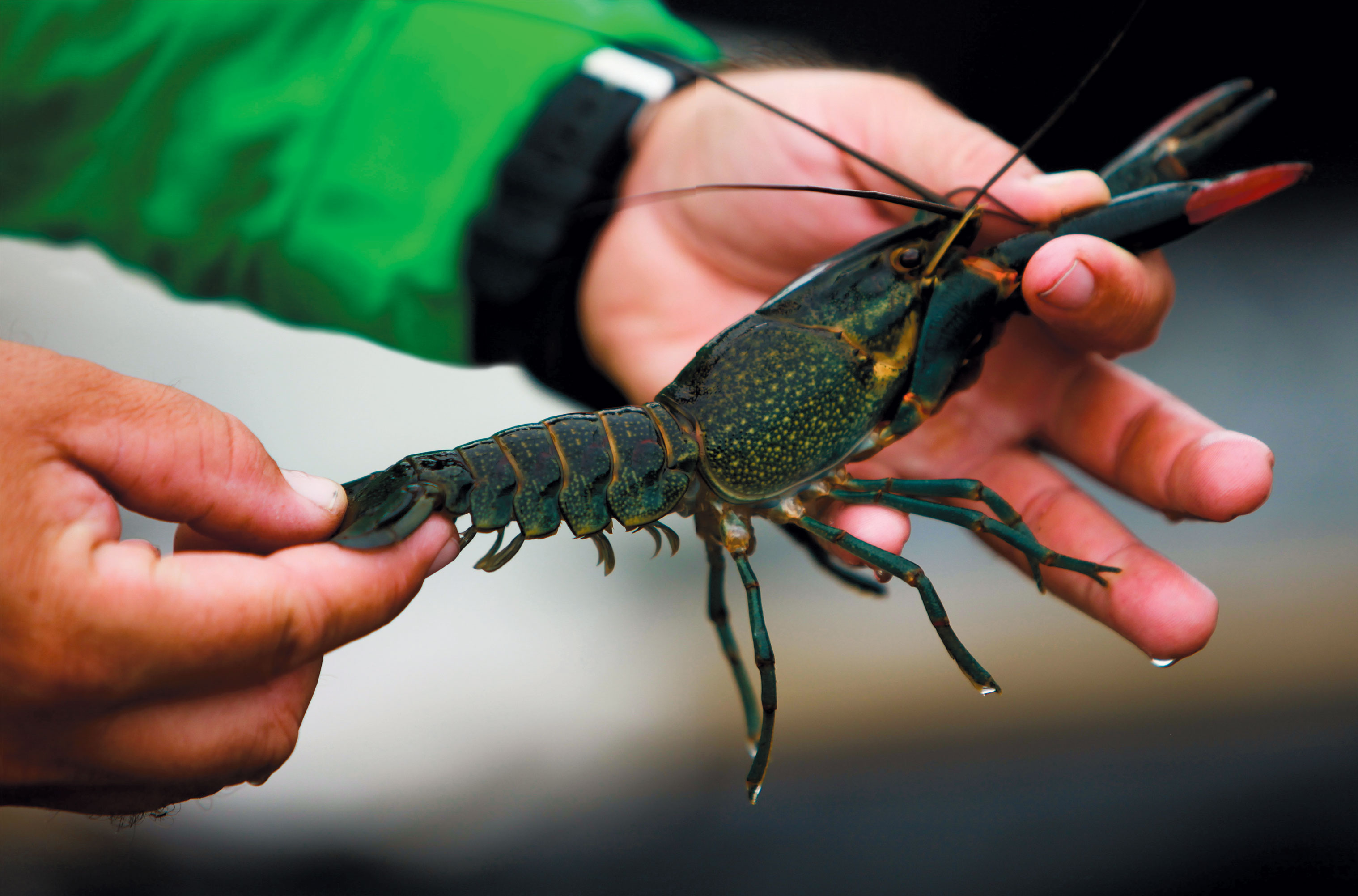
Unfortunately, they are a carrier of crayfish plague and it is likely they passed it to the native white-clawed crayfish (Austropotamobius pallipes) in the UK.

The crayfish plague had ravaged native crayfish populations in Europe and it was seen as an attractive commercial species for export to the lucrative Scandinavian market. In the 1970s, the British government introduced the signal crayfish (Pacifastacus leniusculus) from North America to UK waters. Why are there two types of crayfish in britain’s canals and rivers? The white-clawed crayfish was once a widespread and common species in English and Welsh rivers, but has suffered a decline of 50 – 80% across its European range in the last ten years and is classified as ‘endangered’ on the IUCN red list of threatened species and is at risk of global extinction.

The underside of the claws are usually a dirty-white colour – never red. In comparison, the native white-clawed crayfish is much smaller (under 12cm), with a brown to olive pitted body. The signal crayfish has a distinctly smooth ridge running along the middle of the rostrum (the foremost projection of the carapace). The upper surface of this species is usually brown to greenish-brown, while the lower surface is often a contrasting bright orange or red. Its claws have red undersides with a small turquoise/white blotch on the upper surface at the claw hinge. The signal crayfish is lobster-like in appearance and reaches a maximum size of 16-18cm. Marmorkrebs (Procambarus virginalis) Ecological Risk Screening Summary - U.S.Photo Credit : NNSS Image – Trevor Renals What is the difference between a signal crayfish and a native crayfish?.Never release aquarium plants or animals – RIPPLE video.If those methods are not available, freezing crayfish for an extended period of time (> 48 hours) can also be used as an alternative euthanasia method. Preferred methods of disposal per the AVMA are to euthanize by submerging crayfish in clove oil, ethanol, or other anesthetics ( of AVMA).Note that flushing an aquatic animal down a drain or toilet is not considered humane and does not necessarily kill the animal but can introduce it into a water system. In order to comply with the new invasive species order, owners of marbled crayfish should humanely dispose of any specimens in their possession and clean tanks thoroughly to assure no eggs or young remain. The American Veterinary Medical Association’s Guidelines for Euthanasia of Animals: 2020 Edition provides recommendations for humane disposal of aquatic invertebrates including crayfish.In addition, early detection and public reporting will be critical to detect marbled crayfish prior to establishment. As such, preventing the release of this species from the pet trade is a high management priority. Marbled crayfish have not been identified in public waters in Michigan but were available in the pet trade prior to being added to the Prohibited Species List in 2020.Because of their cloning ability, a single individual can establish a population. Means of Introduction and Spread: Marbled crayfish are widely available in the aquarium trade, creating a high risk of introduction and spread through the release of unwanted pets. Burrowing can destabilize banks and shorelines. Marbled crayfish feed on algae, plants, snails and amphibians and can out-compete native species including fish. With rapid reproduction and aggressive behavior, marbled crayfish can quickly dominate lakes, ponds and streams. Local Concern: The marbled crayfish is the only known decapod crustacean that reproduces through parthenogenesis (i.e., ability to self-clone): all individuals are female and have the ability to lay up to 700 unfertilized eggs that develop into genetically identical offspring. Michigan Status: Marbled crayfish are prohibited in Michigan. Michigan Distribution: Marbled crayfish have not been detected in the wild in Michigan. Distribution: Marbled crayfish have not been detected in the wild in the U.S.


Since its discovery in the German pet trade in the 1990’s, marbled crayfish have established populations in the wild in Germany, Austria, Italy, the Netherlands, the UK, Japan and Madagascar. Native Range: Since the marbled crayfish originated in the pet trade, it does not exist anywhere as a wild native population. Marbled crayfish have been observed migrating across land. They can survive in drought conditions by burrowing into the soil. Habitat: Marbled crayfish have been found in streams, rivers, ditches, ponds, wetlands and retention basins. Lucas Nathan, DNR Fisheries Division, 51.If you see marbled crayfish in the wild, take one or more photos and make note of the location, date and time of the observation, and report to:


 0 kommentar(er)
0 kommentar(er)
